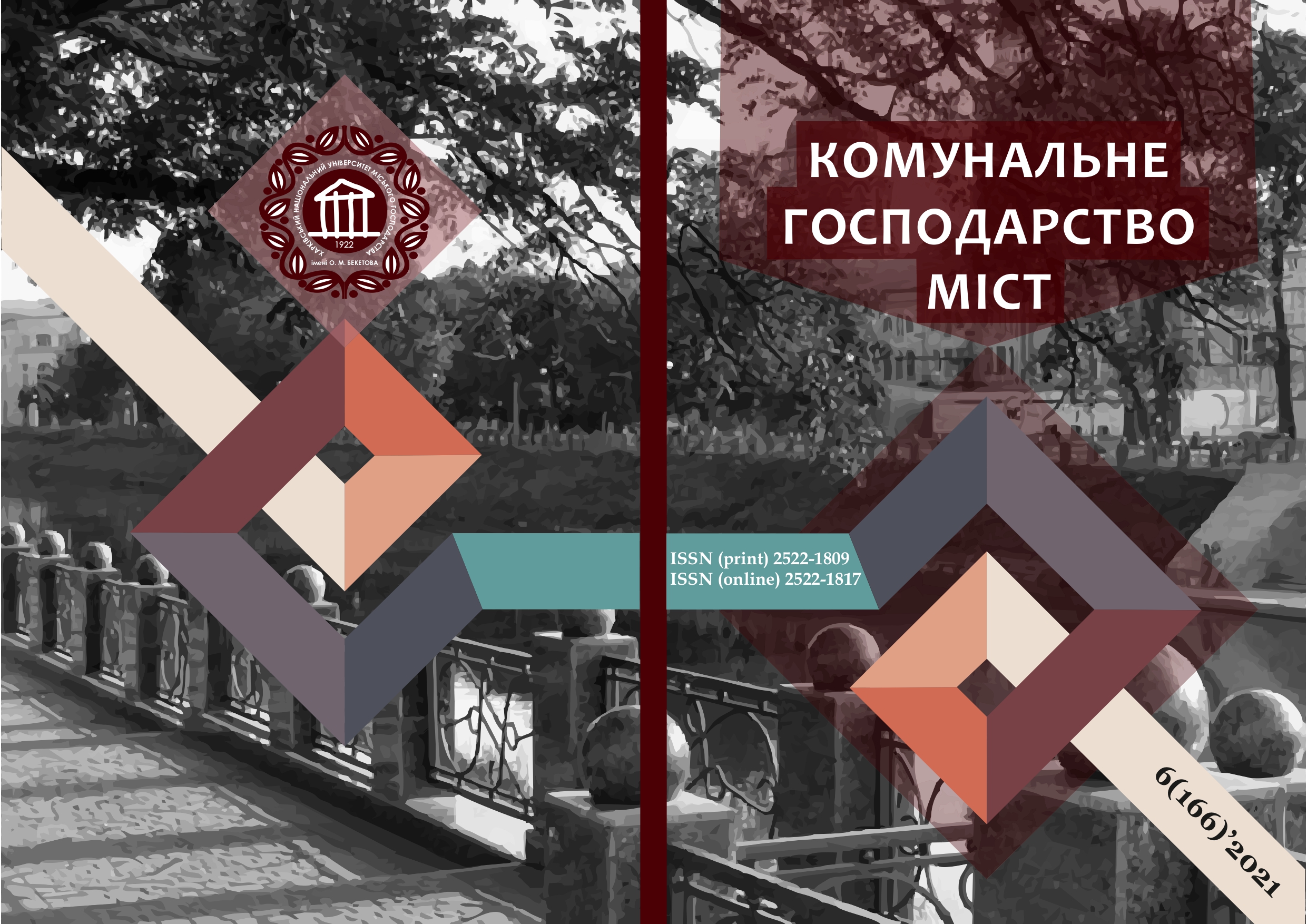DEVELOPMENT OF ALGORITHMS FOR THE GEOSPATIAL ARRAY VISUALIZATION MODULE DATA IN XML FORMAT
Array
Keywords:
geospatial data, spatially distributed systems, visualization, automation.Abstract
The purpose of the article is development of the issue of increasing the efficiency of the automation and visu-alization procedure for creating documentation based on the use of XML-files, which, unlike existing ones, simpli-fies data exchange and presentation, which allows to automate document flow while maintaining accurate data description.
Stationary or portable technical devices in which information is stored in XML files are usually used as visu-alization tools. Such files are used to exchange information between the decision maker, users and spatially dis-tributed systems and are called exchange. The XML format significantly minimizes the amount of memory on the media, in this format, any tags are created that are analogous to the fields in the table. The XML exchange file is also one of the tools for filling the cartographic basis of the urban cadastre and cadastres of other natural re-sources.
The study improved the method of monitoring regional resources, based on the methodology of parallel cal-culations, which, in contrast to existing ones, can be used to process large amounts of spatially distributed infor-mation, which improves the monitoring system of regional resources in processing complex structured requests and too many spatial objects. Thus, the control, classification, coding and reliability of information with the re-production of missing data by verification, conversion and validation of archival or new spatially distributed in-formation.
All developed models, methods and software and hardware for building regional resources monitoring have been brought to the level of engineering methods, algorithms and software tools for computer implementation. Methods and algorithms are implemented using Digitals, FastReport software and C # programming languages.
The approbation of the developed technology is carried out on the example of separate parts of the Kharkiv city and the village of Kotlyary territories.
References
2. Ilyina, I.V., Kravtsov, O.O. (2013). Analysis of report generation tools in information systems. Information processing systems, 2, 131–133. URL: http://nbuv.gov.ua/UJRN/soi_2013_2_30 [in Ukrainian]
3. Pogromska, G.S., Makhrovska, N.A. (2016). Means of report generation: comparative analysis and development trends. Geometric modeling and information technology, 2, 84–92. URL: http://nbuv.gov.ua/UJRN/gmtit_2016_2_18 [in Ukrainian]
4. Keim, D.A. (2002). Information visualization and visual data mining. IEEE transactions on Visualization and Computer Graphics, 8 (1), 1–8. DOI: https://doi.org/10.1109/2945.981847
5. Kolodchak, O.M. (2013). Intellectual data analysis. Computer systems and networks, 773, 49–58. URL: http://nbuv.gov.ua/UJRN/VNULPKSM_2013_773_11 [in Ukrainian]
6. Bezuglyi, D. (2014). Visualization as a modern learning strategy. Physical and mathematical education, 1, 5–11. URL: http://nbuv.gov.ua/UJRN/fmo_2014_1_3 [in Ukrainian]
7. Baumann, M. et al. (2015). Model-Based Visualization of Instationary Geo-Data with Application to Volcano Ash Data. In: Freeden W., Nashed M., Sonar T. (eds). Handbook of Geomathematics. Springer, Berlin, Heidelberg, 1417–1441. DOI: https://doi.org/10.1007/978-3-642-54551-1_87
8. Putrenko, V.V. (2015). System bases of intellectual analysis of geospatial data. System researches and information technologies, 3, 20–33. URL: http://journal.iasa.kpi.ua/article/viewFile/53262/49233 [in Ukrainian]
9. Chen, W., Guo, F., Wang, F.Y. (2015). A survey of traffic data visualization. IEEE Transactions on Intelligent Transportation Systems, 16 (6), 2970–2984. DOI: https://doi.org/10.1109/TITS.2015.2436897
10. Borovyi, V.O., Zarytskyi, O.V. (2016). 3D visualization as a more complete vision of ways of planning and operation of Zoning with the help of GIS-technologies. New technologies, 2, 6–10. URL: https://www.researchgate.net/publication/311709653 [in Ukrainian]
11. Putrenko, V.V., Parkhomenko, A.V. (2017). Geospatial analysis and visualization of data on military conflict. Urban Planning and Territorial Planning, 64, 326–332. URL: http://nbuv.gov.ua/UJRN/MTP_2017_64_43/ [in Ukrainian]
12. Mokin, V.B., Skorina, L.M., Kryzhanovsky, E.M. and Gorash, M.A. (2018). Construction of GIS-integrated data system and models based on XML-formalization for modeling processes in rivers. Scientific works of Vinnytsia National Technical University, 2, 1–10. URL: https://praci.vntu.edu.ua/index.php/praci/article/view/550 [in Ukraini-an]
13. Borovyi, V.O., Agapova, O.L., Zarytskyi, O.V. and Klipko, A.Y. (2019). Application of topographic data for modeling of solar energy potential of the main building of Karazin University. New technologies, 1, 14–20. DOI: https://doi.org/10.31180/2524-0102/2019.1.08.02 [in Ukrainian]
14. On approval of the Requirements to the structure, content and format of registration of the results of work with land management in electronic form (exchange file): Order of 02.11.2009 № 573. Database "Legislation of Ukraine". State Land Committee of Ukraine. URL: https://zakon.rada.gov.ua/laws/show/z0157-10 [in Ukrainian]
15. FastReport.Net. Programmer's guide. Documentation. (2016). URL: https://www.fastreport.ru/public_ down-load/FRNetProgrammerManual-ru.pdf [in Russian]
16. FastReport.Net. User guide. Documentation. (2016). URL: https://www.fastreport.ru/public_download /FRNetUserManual-ru.pdf [in Russian]
17. Zarytskyi, O.V., Kostenko, O.B., Bulaienko, M.V., Manakov, V.P. (2020). Marking of the missed spatially distributed information by means of validation. Bionics of intelligence, 1 (94), 100–106. DOI: https://doi.org/10.30837/bi.2020.1(94).15 [in Ukrainian]
18. Borovyi, V.O., Zarytskyi, O.V. (2016). 3D visualization as a more complete vision of ways of planning and operation of Zoning with the help of GIS technologies. New technolo-gies, 2 (2), 6–10. [in Ukrainian]
Downloads
Published
How to Cite
Issue
Section
License
The authors who publish in this collection agree with the following terms:
• The authors reserve the right to authorship of their work and give the magazine the right to first publish this work under the terms of license CC BY-NC-ND 4.0 (with the Designation of Authorship - Non-Commercial - Without Derivatives 4.0 International), which allows others to freely distribute the published work with a mandatory reference to the authors of the original work and the first publication of the work in this magazine.
• Authors have the right to make independent extra-exclusive work agreements in the form in which they were published by this magazine (for example, posting work in an electronic repository of an institution or publishing as part of a monograph), provided that the link to the first publication of the work in this journal is maintained. .
• Journal policy allows and encourages the publication of manuscripts on the Internet (for example, in institutions' repositories or on personal websites), both before the publication of this manuscript and during its editorial work, as it contributes to the emergence of productive scientific discussion and positively affects the efficiency and dynamics of the citation of the published work (see The Effect of Open Access).

